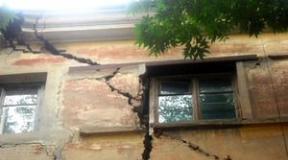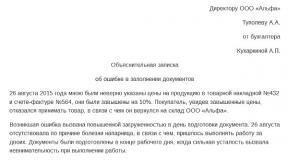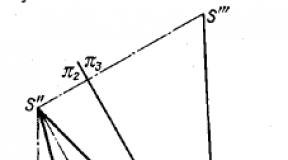Crosses in the cemetery
For 2 thousand years of existence, Christianity has become the leading world religion, which has followers on all continents of our planet. It is not surprising that even the most recognizable symbol of religion is different different forms, size and application.
Even in cemeteries christian cross set differently. Many people think that the Orthodox put the cross at their feet, while the Lutherans and Catholics put it at the head. But it's not. Actually, it's not always like that.
Crosses in the cemetery
The cross in Christianity is an object that is revered in almost all Christian denominations (except Mormons, Jehovah's Witnesses and Molokans). But in the early years of the birth of Christianity, he was far from the status of a sacred symbol. At that time, believers perceived the cross as a mockery over the sufferings of Jesus, the instrument of his murder.
 ©DepositPhotos
©DepositPhotos
The Hebrew alphabet had the letter "tav", which was drawn in the form of an ordinary cross. Slaves and cattle were marked with this sign. This is where the expression “putting a brand” comes from. This attitude of believers towards the cross was understandable.
Instead of a cross, other symbols were drawn, each of which meant something: a dove - the Holy Spirit, an anchor - mercy, fish - Christian faith. Only in the IV century the Byzantine emperor Constantine recognized the cross sacred sign for Christians.
 ©DepositPhotos
©DepositPhotos
According to Christian traditions, the dead in cemeteries are buried with their heads to the west and their feet to the east. This is how Christ was buried. In the New Testament it is said that before the end of the world, Christ will rise again, appearing as lightning from the east. And the dead will rise to stand before the Judgment of God. And immediately they will be able to see Christ.
 ©DepositPhotos
©DepositPhotos
The cross at the feet symbolizes support and eternal life. But if, during burial, the cross is placed at the head of the grave, then it symbolizes the sacred banner that a person will bear after the resurrection. In this case, the cross will symbolize victory over evil.
On this occasion from Minsk diocese democratic response: The practice of erecting a cross is not a common truth. Therefore, it is better to adhere to those traditions that exist in a particular region where a person lives.».
As the clergy themselves say, the location of the cross depends more not on church dogmas, but on local customs and religious beliefs of the relatives of the deceased. Therefore, the cross can be installed both at the head and at the feet. Although the first option is more popular in Catholic countries, and the second among Orthodox.
 ©DepositPhotos
©DepositPhotos
However, Orthodox clergy also have disagreements on this issue. So, one of the lines of the book “All are alive with God” tells that the cross should rise above the grave of a Christian. According to this canon, i> Orthodox cross on the grave should be installed at the feet.
Priest Oleg Molenko answered the question as follows: When the dead are resurrected, they will have to see the cross as a symbol of their salvation. Those who, due to ignorance or for other reasons, had a cross installed at the head, can only hit their heads on its base.».
Neck and back pain? Free workout "Healthy back and joints" Thousands of grateful reviews
Father Athanasius(Gumerov) stated: “ According to Orthodox customs, the deceased should be buried with his head to the west so that he can see the sunrise. And the cross of Christ is placed at the feet of the deceased, so that they can see the face of the Savior when the hour comes».
All peoples have their own principles of burial, but when a person dies, a lot of questions arise related to the design and installation of a cross on the grave. .
An Orthodox cross on the grave must be installed immediately after burial.
Where is the cross placed on the grave of the Orthodox?
If there is a cross on the grave, then this indicates that the deceased was a Christian. For Orthodox Christians, as a rule, an eight-pointed Orthodox cross is installed on the grave. They bury their head to the west so that they can see the sunrise.

The cross at the feet allows the deceased to see the cross and pray on it.
It is worth noting: sometimes a photo of the deceased is screwed onto the cross, but the priests do not advise doing this. It is best to write on the plate the date of death and birth, as well as the last name, first name, patronymic of the deceased.
Why put a cross on the grave?
In Orthodoxy, he sets up a cross on the grave due to the fact that the deceased believed in Christ and wore a pectoral cross during his lifetime, and now he is under the auspices of the Crucifixion, located facing the dead, in order to rise from the tomb during the resurrection and see the weapon of victory over the devil.
Proportions and dimensions of the cross on the grave
The very dimensions of the cross on the grave may be different, but they must correspond to the "Golden Section". The transverse bar of the cross should be equal to 1/3 of the height of the product itself, which is multiplied by 2 and it turns out that the upper end is 1/3 of the center of the cross.

The side planks should also be equal to 1/3, and the lower part will be 2/3. An inclined bar is nailed to the lower part of the cross, which will be parallel to the upper part of the cross. The slope of the bar itself should be equal to 45 degrees, and the length should be equal to the length of the plate.
The slanting crossbar, which is on the cross, represents the scales of justice. According to the Bible, there were two thieves crucified on Golgotha, one was on the left side of Christ, and the other on the right. On the right side, the robber repented and received forgiveness, and this is evidenced by the oblique end of the crossbar, which is directed upwards.
How to make a metal cross with your own hands?
Temporary grave crosses are most often made of wood, but can also be made of metal. Previously, crosses were made of iron, sometimes covered with titanium coating, they could also use steel, cast iron.

Many people buy metal crosses in ritual stores, but sometimes relatives make such a cross with their own hands. Yet again its dimensions must be obligatory to observe the proportions of the "Divine Section".
In order to make this cross on your own, you need to choose a profile pipe, as well as a plate on which to write down information about the deceased. Before installation, it is necessary to paint the products in the desired color. After that, it is desirable to cover with anti-corrosion varnish so that the iron does not rust.
How to make a wooden cross with your own hands?
Making a wooden cross for a grave is easy enough to make it beautiful and correct, you need to know basic carpentry skills.

After the cross is made according to the Golden Section structure, at the end of the work, the cross must be impregnated with stain and varnished.
Is it possible to change the cross on the grave?
If the cross on the grave has worn out and rotted over time, then it can be replaced with a new one, but the old cross must be burned.

The fact is that in the Russian Orthodox Church, wood was the most common material from which crosses were created in the cemetery. Our ancestors did not paint crosses; leave the material as it is.
But today, many are thinking about how to preserve the memory of a loved one, and so that the cross does not lose appearance and stood for much longer before varnishing and staining the cross, it is necessary to clean up all the bumps and make the surface smooth. After covering the cross with stain, after varnishing. The varnish does not dry immediately after a certain time.
Some cover the cross with wax, then it acquires a matte shade and this protects it from bark beetles and sunlight. There are several types of painting crosses, but when choosing a coating, you need to pay attention so that the coating itself can protect the tree from environmental influences.
What to do with the cross after the installation of the monument?
Most priests argue that after a wooden cross is exchanged for a monument, it must be burned, and the remaining ashes scattered on the grave in the form of a Cross. If it is impossible to burn it, then in this case the cross is disassembled and buried in a tombstone.

The church allows sawing a wooden cross and burying it next to the grave or giving it to poor people who do not have the means to install such funeral paraphernalia.
If there is a church or chapel on the territory of the cemetery, then, as a rule, the cross is brought to the clergy, and they already take care that it be burned in accordance with all the rules.
The dream of the cross predicts fate and warns of trials, while demanding tolerance and determination. Praying to the cross in a dream is a sign of joy and receiving a gift from a loved one. Kissing a cross in a dream is a sign of impending trouble, which will be a real test for you. To see an iron cross in a dream is a sign of protection; see a fenced grave cross in a dream - a harbinger of joy and peace; a cross by the road - receiving good news; to see a cross across the road in a dream portends failure in business; flowers next to the cross in a dream mean joy, a pleasant meeting, peace of mind. Seeing a golden cross in a dream portends good news. Seeing a cross on yourself is a sign of fate: it all depends on how it looks. Seeing a cross on others in a dream is a sign of trials. Putting a cross on others (or passing it on to others) in a dream means that you assign certain responsibilities to this person.
Taking off the cross from yourself in a dream means that you will want to change your life, despite the remorse that you will then experience. Finding a cross in a dream is a harbinger of the fact that your life may soon change. Kneeling in front of the cross in a dream means that repentance for sins, humiliation, and emotional experiences await you. A broken cross in a dream portends that your real life will collapse like a house of cards. Seeing a pectoral cross in a dream is a sign of happiness, good luck. Holding a cross in your hands is sadness, chagrin.
A golden cross in the hands of an angel to see in a dream is a sign God's will, God bless.
Interpretation of dreams from the Family Dream BookSubscribe to the channel Dream Interpretation!
As it turned out, the question of how long it takes to put a monument on a grave after a funeral is asked by many people who have experienced the loss of a loved one. Actually, there is nothing to be surprised at: one wants to fulfill the last duty to the deceased relatives correctly and with dignity, in compliance with all traditions and regulations. I decided to answer this question in detail, so to speak, with all the consequences, in order to resolve this dispute once and for all.
Let's start with the most frequently asked question:
BUTneedwhether at allerect a monument on the grave?
I'll be honest: no matter how much I searched for any comprehensive information on this topic in Orthodox sources, I never found an unequivocal answer to this question. I even consulted with the priest, they say, what are the instructions “from above” about this? The Holy Father said that a cross is auspicious, and if relatives want a monument, then the soul of the deceased will be grateful if an icon or a temple is depicted there. And as such, the church does not give instructions regarding the installation of a tombstone and the time when to put it.
Another thing is requirements. There are official regulations, according to which each burial must be marked. Moreover, it is not just indicated that a person is buried at this place. The monument must certainly be erected with the name of the deceased and the period of his life.
Do not forget about traditions, because this is our cultural heritage. And according to them, the monument after the funeral still needs to be installed. And the portrait is desirable, and the words of farewell, so she is - the Russian soul - subtle and a little sentimental.
So, with the question “to bet or not to bet” figured out - bet. This is necessary not only because the higher authorities require it, but also to preserve memory for posterity, and first of all, for ourselves. Willy-nilly, you turn to a deceased person whom you loved and respected when you come to the grave, and no matter how strange it may sound now, but a monument with such features dear to the heart on it helps to ease the soul. Now let's find out
When can a monument be erected after a funeral??
Immediately after the burial, a so-called vremenka is placed - that is, a temporary monument. Most often, preference is given to a wooden cross: it is both light and inexpensive. Funerals and all ritual services today are already expensive, so an inexpensive monument is a good solution.
A permanent monument can be safely erected a year after the funeral. The fact is that during the year the soil manages to be properly compacted, which means that you will not have to watch the sad sight of a warped stele or a sagging pedestal. But this advice can not be strictly followed. For example, if a sad event happened in the fall, then a monument to the grave can be erected in six months - in the spring. During the winter, the soil usually sags enough and problems with the installation of the tombstone should not arise.
There is another opinion that it is better to erect a monument in two years, but not possible before. The first time I came across such a recommendation was on a forum on the net. It was stated there that up to a year, and even more so in six months, the soil would not be compacted as expected. Allegedly, the coffin must still collapse and all voids must be filled. When I began to find out about this in more detail, it turned out (according to the assurance of a master from one rather large ritual office) that now they don’t make such coffins that could quickly rot and form those voids that are dangerous for the monument, for which, in fact, the manufacturers thank you so much.
When I am asked why it is impossible to erect a monument for up to a year, it immediately becomes clear that a person is afraid of breaking some traditions or “unwritten laws”. But as you can see, there are no prescriptions for this. You can put it in 3-4 seasons, when the rains pass, all the precipitation falls and dries up, so to speak, when the seasonal cycle has been completed. And it is connected only with practical considerations. The Church leaves this moment solely to the discretion of relatives, and this is good. After all, there are all sorts of situations: someone wants to equip the grave as quickly as possible, while others decide to raise funds in order to put it up, if not immediately, but for centuries.
One more moment. Sometimes the time when you need to put up a monument, it falls on the winter. But in this case, you have to wait, and it will be right. With frozen soil, even the most experienced installer will not be able to install the tombstone in a quality manner, and in the spring it will be necessary to “rake up the consequences” of such a hasty installation. And in cemeteries, as far as I know, no one will issue permits for installation in winter.
And the last. Many modern companies that sell monuments, and as a rule, install them, offer to put a tombstone right on the day of the funeral. To be honest, it is rather weak to believe that a stone block of several tons can be installed without consequences in loose soil, but see for yourself. If they give you at least a year of warranty for such an installation, why not? At least for your money you won’t have to put the stele in place. But my advice to you is don't rush it. Let it be a balanced decision, calmly discussed in the family circle and not imposed by anyone.
Answers, the rector of the temple in honor of the Exaltation of the Holy and Life-Giving Cross of the Lord of the city of Volsk.
Hello, is it customary to get married in a second marriage? The first marriage was without a wedding, there is a child. Nataliya
The Orthodox Church allows the conclusion of a second church marriage, and in this case performs the Sacrament of the Wedding with some peculiarities in the rites. Those entering into a second marriage must be believers baptized in Orthodox Church not bound by other marital obligations.
If one of those entering into a second marriage was previously in a church marriage, it is necessary to obtain the blessing of the ruling bishop of the diocese in which the first marriage was concluded or the one in which the second marriage is expected to be repeated.
If someone entering into a second marriage was previously in a civil marriage, it is necessary to file a divorce in accordance with state law.
There are no canonical obstacles for a widower or widow of the Orthodox faith to enter into a second marriage.
The Sacrament of the Wedding is performed after the state registration of marriage.
Responsible Priest Dimitry Vasiliev, cleric of the church in the name of the Holy Equal-to-the-Apostles Princess Olga of Kalininsk
 I am 33 years old, had abortions, confessed these sins, realized, but every day I pray with tears, and I can’t, these sins haunt me, I only think about it. What should I do? Why should I go again to confess this flagrant sin? Nataliya
I am 33 years old, had abortions, confessed these sins, realized, but every day I pray with tears, and I can’t, these sins haunt me, I only think about it. What should I do? Why should I go again to confess this flagrant sin? Nataliya
It is impossible to confess already confessed and no longer repeated sins. We do not go to the dentist again to remove an already extracted tooth, even if the jaw in this place is still splitting from pain. And if we want to remove the pain as well, we must remember that by itself it will not subside immediately anyway. And of course, the pain will not go away if we constantly pick at the sore that is already starting to heal. So it is with sin - it is repentant, confessed, and we need to realize once and for all that this sin is no longer with us. And the Lord did not forgive him for us so that we would spend all the strength of our souls on self-flagellation and torment about what cannot be returned by any repentance. Evil is corrected by good and only good, so your strength will still be useful to you, do not waste it in vain.
Hello! My problem is that I've been trying to become a church for three years now and I just can't. I can’t pray normally, I always expect something from prayer, that it will bring me relief or some kind of peace, consolation. I understand that this is a sin, I read about it, sincerely tried to get rid of it, but anyway, as soon as I prepare for prayer or pray, this feeling arises, as if the soul wants to receive something from prayer. Even if I try to fight it, it still defeats me, and after such a prayer I feel completely bad, the thought arises that by such a prayer I only multiply my sins and, perhaps, even upset my nerves. It is often written that this happens from pride and the lack of a sense of repentance in prayer, but what to do if it is not there, although I am aware of my sins and by no means consider myself sinless. Tell me what to do, sometimes I completely despair, because I don’t see a return to my former life, but here I’m marking time in one place and burying myself even more in a hole. Victoria
Hello Victoria! Interestingly, in which book did you read that you need to pray in order to increase the feeling of anxiety, despair and heaviness in your soul? And that you need to pray exclusively with a heart of stone and clenching your teeth so that, God forbid, not to be touched? Yes, there is no need to look for some kind of exaltation, delight and tenderness in prayers. But peace, relief, consolation, all that people who have lived with the Church for more than a dozen years are trying to find again in prayer, which is now given to them with difficulty, through “I don’t want”, through lead fatigue and despondency… Do not deprive yourself of these great joys of neophyteness, while the Lord gives you this consolation, rejoice in it, as a child rejoices in motherly caress. Because time will pass, and the Lord will take away this joy. Prayer will become the greatest work and God will hide from us, and we will become lonely and cold. So the mother hides from the child, he cries and calls her, but she no longer responds to his voice. Because otherwise the child will never learn to crawl over the threshold on his own, into the room where the mother is waiting for him with bated breath to hug her child again and press it to her heart.
Hello! At large services I see the headdresses of simultaneously present priests different color: burgundy, purple, blue, black. What is the reason for this? (Sorry for my ignorance: I don't know the correct names) Sincerely, T.V. Tatyana Vasilievna
Hello, dear Tatyana Vasilievna. The various colors of kamilavkas (this is the name of the headdresses of the clergy that you saw) are associated solely with the fact that until the relevant recent decree of Patriarch Kirill regulating the color uniformity of these headdresses, everyone wore a kamilavka of the same color as it was sewn at one or another church factory . And each factory had its own fabric and imagination. So in a year or two, these hats will become the same color for everyone - purple. With the exception of monastic clergy, their headdresses (hoods) will remain black.
Please tell me, after what minimum period after birth can a baby be baptized. Svetlana
In case of extreme need (a threat to the life of the child), you can be baptized immediately after birth, right at the bed of the woman in labor. And the traditional period after which children are baptized in the Russian Orthodox Church is forty days.
Good afternoon! My question is: should children be baptized in early age? Shouldn't a person first understand and learn, and only then be baptized? After all, after this ceremony, children will not walk with God in their hearts, why then force them to do this? And after all, it may happen that with age a person will understand that he needs God, only in a different interpretation? For example, will he believe in karma, nirvana and understand that Buddhism is closer to him? Anastasia
Good afternoon, Anastasia! Children in the Orthodox Church are baptized according to the faith of their godparents, who take responsibility for ensuring that their godchild grows up Orthodox, and subsequently does not “hit” either into nirvana or into some other atheism. If the godparents approach their duties responsibly, take the child to church for communion, explain the Gospel commandments to him, in word and deed, teach him the moral Christian life by personal example, then when he grows up, he will never exchange the light of Christ's truth for the dim brilliance of others. religious trinkets. If not… even if the parents are not going to bring up a true Christian in the child… Then yes, it is better for him to grow up first. In general, ideally, for everyone who wants to be baptized, the approach should be their own and individual, which, unfortunately, is not always feasible in today's time.
Bless, father! How does the Church feel about the subburial of a second deceased relative in one grave, as is often done now? After all, the deceased are lying on top of each other, isn’t it a desecration of the ashes of a person who is already resting there, isn’t it hard for him, because we don’t know his will, maybe he doesn’t want this? So they buried my father to his mother, both Orthodox. Now I don’t know which monument to erect to them, so that it would be correct, according to the Orthodox. Put two crosses side by side on one common grave, so that at the general resurrection everyone gets their own cross? Will the souls need these crosses on the graves at the resurrection? Or will it be enough pectoral cross and what was put into the hands of the deceased during burial, but can one cross be placed on a common grave? For the same reason, I doubt the correctness of the cross drawn on the monument, I think that it would be more correct to erect a monument in the form of a cross. Is it necessary to place a cross at the feet of the deceased? Sincerely, r.B. Irina.
God Bless! The fact is that the state of the body of a deceased person does not at all affect the state of his soul. There is a tradition of burials that is important for the living, but not for the dead. Putting a cross at the feet so that the body lies, as it were, facing it is a tradition that reflects our, the living, faith that the deceased loved God and turned all his hope after death to Christ and his Crucifixion, as the main means of our salvation. The cross is also a sign for us, the living, that in this grave lies an Orthodox Christian, and not a Jew, with a Star of David on a pedestal, not a Muslim with a crescent moon on an obelisk. Monuments are made for the living, as evidence of our love for the person buried here and the memory of him. For the living, names and epitaphs are carved on the monuments, so that the living remember and know who lies here and what he was dear to them. And of course, after the resurrection, the Lord will create new bodies for us, otherwise, where would those eaten by animals in the forests and fish in the sea rise from, where would they find themselves disintegrated into atoms in the fire of Hiroshima and how would the saints resurrect, whose relics are scattered across different countries more than hundreds of parts? So don't worry. For the departed, only our prayer and our good deeds are important, and how many of them are buried there in one grave - it does not matter at all.
All my childhood, my parents hammered into my head that we should not go to church and priests are bad people. 3 years ago I married a believer, against the will of my mother (we got married, I became a church member), my mother categorically refused to communicate with me and my family. I tried to talk to her, but she told me "you lost your mother", called me crazy and a sectarian. I don't want to see her anymore, and I don't think I love her. Is it a sin, because the commandment says "honor your father and mother." Olya
Olga, but after all, the commandment also says that “the enemies of a man are his household”, and also that “whoever loves his father or mother more than Me is not worthy of Me.” So don't worry. And love for a mother is not at all limited to communication alone. What does it mean to love like a Christian? Wish your neighbor to be saved. Don't you want your mother to save her soul? So pray for her. And there she will decide for herself whether she wants to enter the Kingdom of God or not.
My wife was called to be the godmother for the girl. Since we currently live in another city, is it possible for her to hold a public talk in Moscow, and come to baptize the child in Saratov? Alexander
It is possible, why not. Just let her bring some certificate about this from the church where she will be read out, and (or) be ready to clearly and consciously answer all the questions of our priest, who will baptize, regarding the duties of the godmother, the foundations of our Orthodox dogma and gospel life.
Father, please tell me how to properly use the oil consecrated on the relics of the saints and what prayer should be read? George
To be honest, no one in the Orthodox Church knows a clear answer to your question. Someone reverently anoints sore spots with such oil, someone drips it into cooked food, someone adds it to a lamp, and someone smears it on the walls of their homes. At the same time, some read entire akathists to the saint, and some confine themselves to a simple prayer: “Holy Father George, pray to God for us!”. Still, there are people who have such oil just standing on the shelf until it polymerizes. According to your faith, so be it to you, as they say.
Hello! He received the news of the blessing with trepidation. His Holiness Patriarch Cyril for the celebration of the Cathedral of the Saratov Saints! Could you, as an exception, publish either here on the site, or give footnotes to the texts of the troparion, kontakion, canon, akathist to the Cathedral of the Saratov Saints ??? Sincerely, R.B. George.
Website Editor's Response:
You can find the troparion and kontakion in the service for the Gathering of Saratov Saints here: http://www.mineya.ru/files/saratov_stt.pdf



















